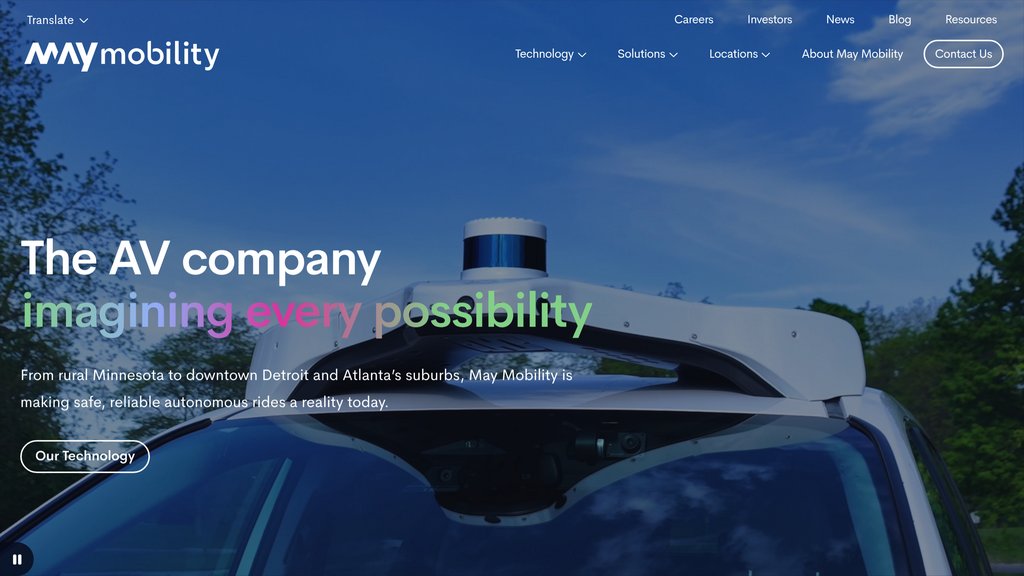May Mobility
Autonomous shuttles for safe, scalable urban and rural transportation
Introduction
What is May Mobility?
May Mobility is an innovator in self-driving vehicle technology, dedicated to building transportation that is safer, more efficient, and universally accessible. Their core technology, the proprietary Multi-Policy Decision Making (MPDM) system, empowers vehicles to learn and adjust instantly to ever-changing and unpredictable traffic situations. This capability allows for the successful deployment of autonomous shuttles and minibuses in a wide range of environments, from dense cities to rural areas. The company's expanding fleet features ADA-compliant vehicles and a new high-capacity electric minibus created with Tecnobus, broadening their international mobility-as-a-service portfolio. Committed to safety, inclusivity, and eco-friendliness, May Mobility collaborates with municipalities, transit authorities, and corporations to address transportation shortages while cutting down on traffic and pollution.
Key Features:
• Multi-Policy Decision Making (MPDM): A sophisticated AI system that assesses potential driving actions every fraction of a second, ensuring secure travel through intricate and unforeseen road scenarios.
• Scalable Autonomous Fleet: A versatile range of vehicles, from accessible Toyota Sienna shuttles to a spacious electric minibus for up to 30 people, designed to meet diverse transit demands.
• Accessibility Focus: All vehicles are built to ADA standards, featuring wheelchair ramps and accommodations for passengers with mobility aids, service animals, and caregivers.
• Sustainability Commitment: Eco-conscious electric platforms with interchangeable batteries reduce operational pauses and carbon footprint, promoting greener urban mobility.
• Real-World Deployment: Validated autonomous services are already active in numerous U.S. cities and Japan, with partnerships facilitating swift growth and seamless integration into current transit networks.
Use Cases:
• Campus and Corporate Mobility: Implementing self-driving shuttles within large campuses, corporate parks, and airports to optimize internal transit systems.
• Urban and Suburban Transit: Offering reliable, on-demand autonomous shuttle services in metropolitan and suburban areas to enhance connectivity and alleviate congestion.
• Accessible Transportation: Ensuring fair and equal transit access for individuals with disabilities through fully compliant vehicle designs.
• Mobility-as-a-Service (MaaS): Providing flexible autonomous solutions for public transit agencies and fleet managers to augment transportation offerings.
• International Expansion: Leveraging global partnerships and vehicle certification to bring autonomous transit solutions to new international markets.
